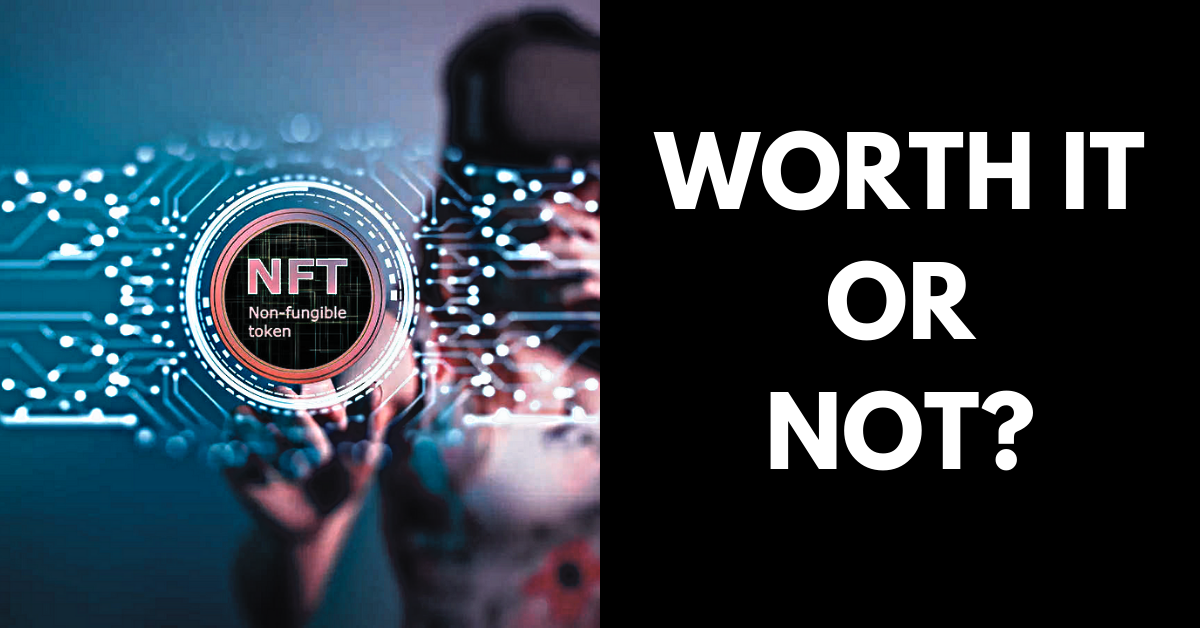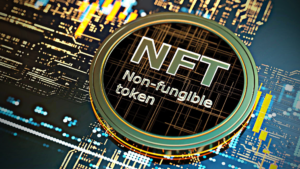The majority of us have undoubtedly heard of the buzzword “NFT” by this point. Cryptocurrency and new media projects are garnering more attention than ever because of the epidemic, which is setting the standard for distant auctions and innovative methods to interact with the market.
When graphic designer Beeple’s piece Everyday sold for $69.3 million at auction, it became him the third most expensive living artist ever to sell at auction, behind only Jeff Koons and David Hockney. The news about the most recent artist “drops”—a word for making NFTs available for purchase—seems to be everywhere you turn.
While some believe the cryptocurrency bubble will soon pop, Pablo Rodriguez-Fraile, the owner of Beeple’s Everyday, is confident that NFTs are more than just a hyped-up fad. They are “a trigger for a generation,” he claimed, according to the online journal The Verge.
It’s crucial to understand what an NFT is and how they are used to sell digital art in order to comprehend what Rodriguez-Fraile meant by this. NFT stands for Non-Fungible Token, however, that description may not be very helpful to folks who are unfamiliar with economics and the blockchain.

Why are NFTs being promoted as a tool for new media artists to affect change in the art world and what exactly are they?
Any item that is unique and cannot be transferred like-for-like is said to be non-fungible. For instance, you cannot exchange your house for just any other house since it has characteristics that set it apart from others. A file that resides on the blockchain and enables you to confirm the ownership of an asset is known as a non-fungible token.
The NFT can serve as a digital proof of authenticity for the piece even if it isn’t the artwork itself. A file’s creator can designate a legitimate owner using the NFT, giving that person the authority to display, use, or sell the file.
This is a useful piece of technology for the field of digital art. It gives the buyer the assurance that they are the legal proprietors of a unique digital asset.
This opens up the opportunity to certify legal ownership over the work and assert true “scarcity” for individuals who are less certain about including New Media works in their investment portfolio. This assurance might aid digital artists in breaking into a market that values authenticity and originality.
Do you realize that you may just copy and paste a piece of digital art to assert your ownership? Technically, yes, but the NFTs’ support comes from the fact that they give artists a way to confirm uniqueness. The Mona Lisa artwork in the Louvre is still worth millions of dollars, despite the fact that you could download an image of it on your device. The genuine item still has value in the world of art.
NFTs and blockchains.
The most popular blockchain for the distribution of NFTs is Ethereum. A major selling feature of Ethereum, according to the non-profit Ethereum Foundation’s website, is its financial decentralization. A currency traded outside of the control of major banks, businesses, and governments is called ethers (ETH). In the proper hands, these tools can assist people with limited access to banks or conventional financing in taking advantage of investing opportunities.
Blockchain can offer opportunities for artists who live outside of conventional art world hotspots like Paris and New York to acquire recognition in the arts community, even though large auction houses like Christie’s have jumped on the NFT bandwagon.

Artists in the crypto-community in Seoul can travel the blockchain thanks to NFT art agent Numomo. They discussed their use of social media to support artist networks in their chat with Agora. Because NFT sales are direct-to-user, artists can receive immediate feedback on their work from the market.
For upcoming artists seeking to establish a network of domestic and international patrons. Without the need for a middleman, the ability to adapt to the market can save crucial time and resources while generating profits.
Nigel Fogden, an artist, also discusses with Agora writer Francesca Miller the chances that NFTs might open up for underrepresented groups, such as women artists, by providing them with a stage for direct audience involvement. This aids them in shattering the ceiling that has long prevented and undervalued their work in the market.
Russian collective Pussy Riot, who organized a four-part NFT drop on platform Foundation to go along with their music video, asserts that NFTs may be a positive force in the music industry in addition to the field of visual art.
To assist in protecting victims of domestic abuse, they gave the money they made to a women’s shelter. As a founder member, musician, designer, and activist, Nadya Tollonokova told the online publication TechCrunch that “it’s incredibly amazing to see a tool that’s not controlled by any government.”
NFTs aren’t necessarily a one-stop rail line to utopia, despite claims of a more just world of digital art. Critic Ben Davis said in an expose for ArtNet that an examination of the various works of art that make up Beeple’s Everyday: The First 5000 Days (2021) revealed unsettling findings.

The piece is made up of 5000 different pictures that were created every day for 13 years, including hand-drawn satirical cartoons from Beeple’s time before he became a new media artist. At their worst, these ancient works of art contain obscene images, sexist captions, and crudely painted racial caricatures.
Although Beeple’s work still contains a certain amount of shock value, his depictions of a dystopian 2021 world powered by technology and created utilizing digital illustration techniques may contain a little more nuanced political criticism.
The purchaser was eventually identified as Vignesh, also known as Metakovan, a blockchain investor and businessman from Singapore. Despite the dubious nature of Beeple’s photographs, Metakovan told CNBC that he intends to establish a “meta-museum” to display cryptographic works online. Instead of paying admission, viewers would buy virtual tokens that serve as shares in the work.
This will “decentralize and democratize art so token holders everywhere may enjoy a piece of history and share the wealth,” a Sundaresen representative claimed. Is Sundaresan’s action may be noble or possibly a plot that gives private investors total control over photos and profits? Only time will tell.
Criticisms regarding NFTs.
NFT artworks are currently the subject of much criticism, perhaps because of their enormous carbon footprint. Calculations show that the average carbon cost of an NFT is around 90 times greater than the emissions caused by printing and delivering a print the conventional way. The blockchain album sales by Canadian musician Grimes, who generated enough carbon to power the typical EU resident’s home for 33 years, generated $6 million in revenue.
NFT artists are searching for alternatives, such as carbon offsetting, due to these negative effects. Through the Nifty Gateway portal, Grimes digitally auctioned off 10 cryptocurrency artworks earlier this year. The pieces, named War Nymph, are a part of a proposed NFT universe that also includes Grimes’ virtual self. The movie shows animated characters that resemble cupids floating above an Arcadian environment that resembles a Mars-like vision. The artist donated the sale’s proceeds to the @Carbon180 carbon offset collective.

Although there is money to be earned in the NFT art market, who stands to gain the most, and at what cost to the environment? Even though cryptocurrencies like Ethereum are now growing exponentially, traditional investors are still wary of trading in these unregulated currencies. Decentralization has the unintended consequence of leaving them unregulated by the government, leaving them open to legal challenges, fraud, and even cyber threats.
Although auction houses are starting to take notice of blockchain-based Digital Art sales, according to Artsy, they continue to require traditional currencies as payment for fees. This might prevent investments from younger, more diversified collectors. However, there are reasons to think that NFTs will still have a lasting impact on the arts and mark a turning point for inclusivity in digital art once environmental problems have been resolved and the first NFT bubble has burst.




